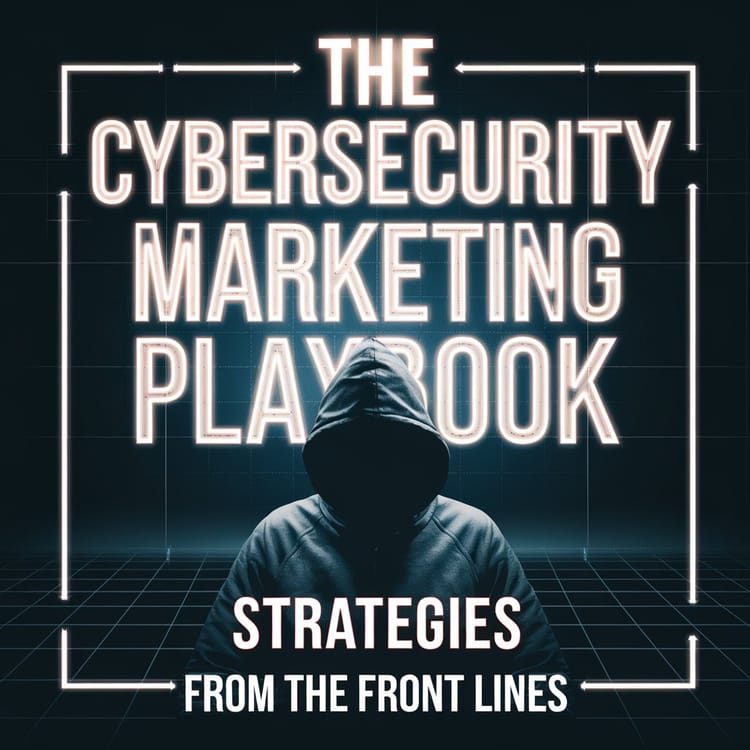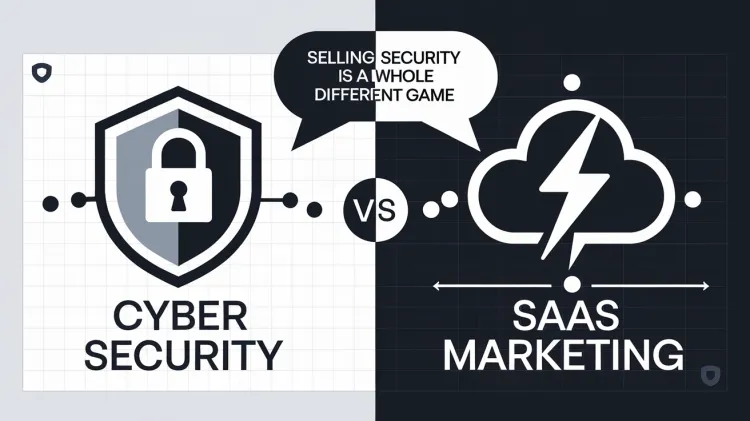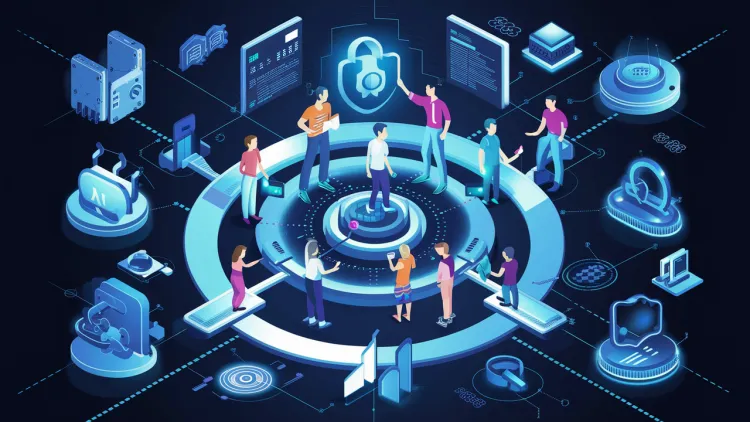How to Reduce Churn and Increase Paid Conversion Using SaaS Onboarding

Introduction to SaaS Onboarding
Importance of Onboarding in B2B SaaS
Think of SaaS onboarding as the first day at a new job. You want to know where everything is, what you need to do, and how to get help if you’re stuck, right? Onboarding in the B2B SaaS world works the same way. It’s the process that introduces new users to your software, getting them comfortable and up-to-speed as quickly as possible. Effective onboarding helps establish the value of your product right from the start, making sure users not only stick around but also become paying customers.
How Effective Onboarding Reduces Churn
Churn is basically when users say “thanks but no thanks” and leave your service. So, how does effective SaaS onboarding help reduce churn? It’s simple: a well-designed onboarding process ensures that users understand how to use your software and see its value early on. This initial satisfaction can prevent them from abandoning your service before they’ve even given it a proper shot. According to a study by Wyzowl, 55% of users have returned a product because they didn’t understand how to use it. A good onboarding process can make sure your users don’t fall into that statistic.
Impact of Onboarding on Paid Conversions
When users truly understand and see the benefits of your software through effective onboarding, they’re much more likely to convert to paid plans. They know how it works, they see that it solves their problems, and they’re willing to invest in it. The data backs this up too. According to UserPilot, companies that improve their onboarding see as much as a 50% increase in paid conversions. It’s clear that investing in a smooth onboarding process can turn curious trial users into long-term paying customers, effectively hitting two birds with one stone: you reduce churn and increase conversions.
So, if you’re in the SaaS game, putting time and effort into your onboarding process isn’t just a good idea—it’s essential for growing your business and keeping your users happy.
Analyzing Customer Journey and Pain Points
Identifying Different Customer Touchpoints
Let’s talk about touchpoints. These are all the places and times a customer interacts with your product, like your website, emails, in-app messages, and support. By mapping out these interactions, you can see where people are thriving and where they might be getting stuck. Don’t guess; data from tools like Mixpanel or Hotjar can show you what’s happening at each touchpoint. If you want some deeper insights, check out this guide on optimizing customer touchpoints.
Understanding Common Challenges New Users Face
When someone signs up for your SaaS product, it’s not all sunshine and rainbows. New users often hit roadblocks like complicated setups, confusing interfaces, or not understanding the value your product offers. If you pay attention to where users drop off or reach out for help, you can start spotting common pain points. Here’s a pro-tip: Make the first 5 minutes delightful and super easy. Remember, first impressions last, and if users feel that they’re getting value fast, they’ll be less likely to churn. To touch on some classic hiccups, this article discussing onboarding challenges can shed some light.
Leveraging Customer Feedback for Continuous Improvement
Your customers are goldmines of information, so listen to them. Set up channels where they can easily share their thoughts — think surveys, feedback forms, or even direct conversations. Tools like Intercom or Zendesk can organize this feedback so you can spot trends and take action. Keep tweaking your onboarding process based on what users are saying. It’s earned wisdom that a product is never truly finished; there’s always room for improvement. If you need some inspiration on how to gather useful feedback, you might find this customer feedback strategy article helpful.
In short, understanding the customer journey and the common pain points they face, combined with leveraging customer feedback, can set you on the right path to reducing churn and increasing paid conversions through effective SaaS onboarding.
Crafting an Effective Onboarding Strategy
Setting Onboarding Goals and KPIs
When building your onboarding strategy, it’s key to have clear goals and metrics. Think about what a successful onboarding looks like for your company. Maybe it’s getting users to complete their first task, or perhaps it’s having them integrate your app with other tools they use. Whatever it is, define it clearly.
Next, decide on the Key Performance Indicators (KPIs) to track these goals. These might include metrics like user activation rate, time to first value, or completion rates for onboarding steps. Having these KPIs will help you measure what’s working and what’s not.
Designing a User-Centric Onboarding Flow
Now, let’s talk about creating a user-centric onboarding flow. This means putting yourself in your user’s shoes and crafting an experience that makes it easy for them to get started with your app. Break down the onboarding process into small, manageable steps and provide clear instructions at every stage.
For instance, you can start with a simple welcome message, followed by a guided tour of your app’s main features. Interactive tutorials, tooltips, and progress indicators can also make the onboarding process smoother. According to an article on UX Design, the most effective onboarding experiences are ones that provide value quickly and reduce the need for users to figure things out on their own.
Personalizing the Onboarding Experience for Different Customer Segments
One size doesn’t fit all, especially when it comes to onboarding. Different customer segments will have different needs and goals. Personalize your onboarding strategy to match these differences.
For new users, a basic intro might be perfect. For more experienced users, you might skip the basics and show advanced features instead. Use data like user persona, past interactions, and even responses to onboarding questions to tailor the experience.
Personalization not only helps in making users feel valued but also speeds up their journey to finding value in your product. An article on HubSpot emphasizes that personalized customer experiences significantly improve conversion rates and customer satisfaction.
With these steps in place, you’ll be well on your way to reducing churn and boosting paid conversions through a solid SaaS onboarding process.
Implementing a Seamless Onboarding Process
Creating Engaging and Informative Welcome Emails
Getting started with a new product can be a bit overwhelming, so kick things off right with a killer welcome email. Think of this as your first impression—it’s the friendly handshake and smile that sets the tone for everything that comes after. Make sure your welcome emails are more than just a simple “Hello!” Aim to introduce your product’s most exciting features and highlight the benefits users can expect. It’s a great place to share quick tips or a link to a helpful video on how to get started. Check out how companies like Slack craft their welcome emails for some inspiration.
Developing Comprehensive Product Tutorials and Guides
Okay, so you’ve hooked them with a great welcome email—what’s next? Users need to know how to use your product effectively, and detailed product tutorials and guides can be a game-changer here. These aren’t just for the tech-savvy folks; they should cater to every skill level. Compelling, step-by-step guides and video tutorials can make your product’s functions easy to grasp. Even better, make these resources easily accessible by dedicating a section on your website for support or learning. Need ideas? Look at how Asana does their tutorials—they’re simple, intuitive, and incredibly user-friendly.
Utilizing In-App Messages and Walkthroughs
Sometimes, even the best-written guides aren’t enough. That’s where in-app messages and walkthroughs come in handy. These real-time, interactive messages guide users through your product while they’re using it. Think of them as a friendly tour guide, popping up right when you need some direction. They can help clarify tricky features or highlight new tools that users might otherwise miss. Tools like Intercom and Tour My App make it pretty straightforward to set these up. A well-timed in-app message or a smooth walkthrough can turn confusion into “Aha!” moments, leading to happy, loyal customers who are less likely to churn.
By combining engaging welcome emails, thorough product tutorials, and helpful in-app messages, you’re not only guiding your users on how to use your product but also creating a positive first experience. These elements play a crucial role in reducing churn and converting free users into paid subscribers. Isn’t that what we’re all aiming for?
Utilizing Onboarding Tools and Automation
Overview of Popular SaaS Onboarding Tools
Jumping into the world of SaaS, you’ll realize there’s a bunch of tools specifically built to make onboarding smooth and user-friendly. Tools like Appcues and Userpilot are pretty popular because they let you create engaging onboarding flows without needing any coding skills. Appcues, for example, offers features like product tours and in-app guides, which can help new users get comfortable with your software quickly. Similarly, Intercom isn’t just a messaging platform, it also has onboarding features, like interactive guides and automated messages.
Benefits of Automation in Onboarding
Automation can be a game changer when it comes to onboarding. Think about it – setting up welcome emails, sending personalized greetings, and guiding users through features without manually lifting a finger. Tools like Drip or HubSpot help with crafting email sequences that keep users engaged from day one. Automation ensures that every new customer gets the royal treatment without you needing to intervene every single time. It helps keep the process consistent, reduces human error, and frees up your time to focus on more complex customer issues.
Integrating Onboarding Tools with Your Existing Systems
The big advantage of these onboarding tools is how easily they can integrate with systems you’re already using. Imagine you have a CRM system like Salesforce and an email marketing tool like Mailchimp. Onboarding tools often offer simple integrations so everything can work seamlessly together. That means you can sync user data across platforms, making sure your marketing and customer success teams are always in the loop. For instance, when you integrate Appcues with Salesforce, you can track how new users are engaging with your product, directly within your CRM.
External Links and Further Reading
To dive deeper into these tools and their capabilities, here’s where you can get more details:
- Appcues: Appcues Official Site
- Userpilot: Userpilot Official Site
- Intercom: Intercom Official Site
- Drip: Drip Official Site
- HubSpot: HubSpot Official Site
- Salesforce: Salesforce Official Site
- Mailchimp: Mailchimp Official Site
Using these links, you can explore how each tool works and decide which ones could be the best fit for your SaaS onboarding strategy.
Measuring and Optimizing Your Onboarding Process
Key Metrics to Track Onboarding Success
If you’ve got a SaaS product, keeping an eye on some key onboarding metrics can really help you see what’s working and what’s not. For starters, track the user activation rate. This measures how many users actually get through the key steps of your onboarding process and start using the core features of your product. Also, pay attention to the time to value (TTV)—how long it takes new users to realize the value of your product. If it’s taking too long, you might need to simplify your onboarding.
Another important metric is the drop-off rate. This tells you how many users abandon the onboarding process at each stage. You can use these insights to identify and address sticking points. And don’t forget the customer satisfaction score—ask your users how they felt about the onboarding experience. Happy users are more likely to stick around!
For more on measuring the success of an onboarding process, this article from SaaSOptics provides some great insights.
A/B Testing Different Onboarding Approaches
A/B testing is a game-changer when it comes to refining your onboarding process. You can test different elements like email sequences, tutorial formats, or even the order in which you introduce features. By running these experiments, you can see which version performs better and make data-driven decisions.
For instance, consider testing two different welcome email formats. Version A could be short and sweet, just a quick hello and a link to a product guide. Version B could be more detailed, offering tips and resources right off the bat. Whichever version gets more engagement can help guide your future onboarding strategy.
A/B testing isn’t just limited to emails. You can try it with in-app messages, video tutorials, or even the layout of your dashboard. Remember, the goal here is to make the onboarding process as smooth and engaging as possible. For more details on effective A/B testing, check out this guide from Optimizely.
Using Analytics to Refine Onboarding Steps
Don’t underestimate the power of analytics to fine-tune your onboarding process. Tools like Mixpanel or Google Analytics can provide a treasure trove of data about how users are interacting with your product.
Start by creating a funnel that tracks each step of the onboarding process. See where users are spending the most time and where they’re dropping off. Maybe they’re breezing through the initial setup but hitting a wall when it comes to integrating with other tools. That’s a signal you need to simplify that integration step.
You can also use heatmaps to see where users are clicking and scrolling. If important buttons or links are being ignored, maybe they need to be more prominent or better explained. The detailed insights you get can help you tweak and refine each step to make the experience smoother and more intuitive.
For more on the power of analytics in refining onboarding, this blog post from Heap is worth a read.
By monitoring these key metrics, experimenting with A/B testing, and leveraging analytics, you can create an onboarding experience that not only keeps users engaged but turns them into paying customers.
Best Practices and Case Studies
Examining Successful Onboarding Examples
Seeing how the pros do it can be a game-changer. For instance, take Slack. They have an onboarding process that’s practically legendary in the SaaS world. The first time you log in, they don’t just dump a pile of features on you. Instead, they guide you through a series of small tasks, showing you the ropes bit by bit. This approach helps new users quickly understand the key features without feeling overwhelmed.
Another great example is Trello. Their onboarding uses interactive tutorials and checklists to ease new users into the platform. It’s almost like having a personal tour guide.
Common Pitfalls to Avoid in SaaS Onboarding
While it’s great to look at what works, it’s equally important to know what to avoid. One of the biggest mistakes is information overload. Bombarding new users with too much info can scare them away before they even start to see the value of your product.
Another common issue is not personalizing the experience. If your onboarding process feels too generic, users might not feel any connection to your product.
A lack of follow-up can also be a killer. Initiating conversations after the initial onboarding phase can keep users engaged and show them the continued value of your product.
Practical Tips from Industry Leaders
Let’s take some insight from industry leaders. Drift’s David Cancel, for instance, is a big advocate of the 80/20 rule. He suggests focusing on the 20% of features that provide 80% of your product’s value during onboarding.
Des Traynor from Intercom emphasizes the importance of contextual onboarding. He suggests triggering educational content based on the user’s actions within the app, instead of sticking to a rigid sequence.
And don’t forget about the power of community. Kevin Hale from Wufoo talks about how creating a support community around your product can make users feel they’re part of something bigger, increasing their engagement and loyalty.
Want to dig deeper? Check out some relevant case studies and best practices.
By learning from these examples, avoiding common pitfalls, and taking tips from the experts, you’ll be well on your way to reducing churn and boosting those paid conversions through killer SaaS onboarding.
Conclusion
Summary of Key Points
We’ve covered a lot of ground on how effective onboarding can reduce churn and boost paid conversion in SaaS. Creating a smooth user journey from the get-go, including helpful tutorials, quick wins, and personalization, sets the stage for long-term success. It’s also critical to keep engagement high through regular check-ins, valuable content, and proactive support.
The Ongoing Nature of Onboarding Optimization
Onboarding is not just a one-and-done deal. It’s an evolving process that needs constant tweaking. As your product changes and grows, so should your onboarding experience. You’ll want to be regularly testing new features and getting user input to keep the process fresh and effective. This means keeping an eye on any new tech, tools, or strategies that can make onboarding smoother and more appealing.
Encouraging Feedback and Continuous Improvement
Your users are your best source of insights. Encourage them to share their thoughts and experiences with your onboarding process. Regular surveys and feedback forms can be pretty useful. It’s all about creating a loop of continuous improvement—listening to what users are saying, iterating based on their feedback, and then going back to them to show how their input made a difference. They’ll appreciate the effort and you’ll have a better product because of it.
Gathering user feedback isn’t just about identifying pain points; it’s also an opportunity to reinforce what’s already working well. Use tools like SurveyMonkey for collecting feedback and Google Analytics to analyze user behavior. These platforms provide actionable insights that can guide your next steps.
In the end, successful SaaS onboarding is all about being responsive and adaptive. By focusing on continuous improvement and keeping the lines of communication open, you’re setting yourself up for long-term growth and a loyal user base.
So, what are you waiting for? Dive into your onboarding process, start asking for feedback, and keep making changes to delight your users every step of the way.



